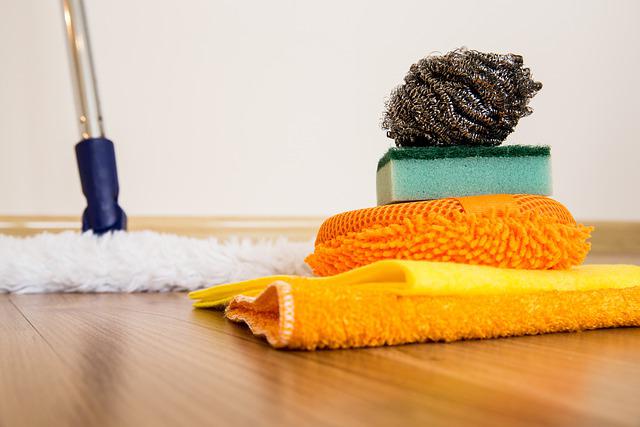Be aware of the carcinogens in household cleaning products
Carcinogens are substances that can cause cancer in living tissues. This article lists household cleaning materials that you may use in your home that contain carcinogens. The focus is on using safe cleaning products and many of them can be made with simple ingredients you already have in your home.
Cancer in the United States is responsible for more than 599,000 deaths annually, is second only to heart disease, and there are 9.5 million cancer deaths worldwide. There are many products we use in our homes that contain ingredients associated with or suspected of causing cancer, as well as other ingredients that may cause allergies, asthma, and other health problems. Carcinogens should be avoided, and healthy alternatives are available.
Non-toxic products:-
There are many non-toxic options that work well, can be used to replace toxic products, and are usually cheaper and easier to replace.
For example, many cleaning products can be made from items you already have on hand, which includes things like white vinegar, baking soda, salt, and many other items.
Three classes of carcinogens:
The Australian NOHSC divides carcinogens into three categories.
- Carcinogens are substances known to be carcinogenic to humans.
- Carcinogens are substances that should be considered as carcinogenic to humans.
- Carcinogens are defined as substances that have potential carcinogenic effects in humans but there is not enough information about them to make an assessment.
Awareness of the chemical product:-
Arts and crafts materials
You may not think of arts and crafts materials as carcinogens, but this is another area to make good choices. Use vegetable dyes and paints, and as you probably know, avoid paints that contain lead or other heavy metals. Also use glues, paints, and water-based markers. Avoid hazardous solvents such as rubber cement, paint thinners, and solvent-based markers.
Auto Supplies:-
We know how dangerous car exhaust fumes are, so it's no surprise that the fluids we use in our cars aren't very safe either. If you are working on your own vehicle, do so carefully, and keep the motor supply closed when not in use.
Dry cleaning:-
Conventional dry cleaners use many chemicals and can stick to your clothes for several days. If your clothes require dry cleaning, ask for the wet cleaning option in detergent, and look for dry cleaners that use carbon dioxide liquid or citrus juice detergents.
Air Fresheners:-
often contain naphthalene and formaldehyde; Both are known carcinogens, as well as a host of other toxic chemicals. These chemicals mixed with ozone make air fresheners more toxic. The best thing to do is to remove the source of the smell first rather than trying to mask it.
- Keep your trash empty; keep the window open when possible; clean the source of unpleasant odor with non-toxic products; Burn 100% pure beeswax with 100% cotton wicks to purify the air.
- Use an open can of baking soda to freshen up your refrigerator or any room. Houseplants are great for removing carbon dioxide and other toxins, too.
- You can also freshen the air in natural ways, such as by cooking cinnamon, cloves, fresh ginger, or other herbs in water over the stove.
- Try using one or two drops of your favorite pure essential oil. To clean, try zeolite, baking soda, or natural fragrances from essential oils.
Control of fleas, ticks and lice:-
Avoid pesticides containing lindane. In rare cases, lindane has caused seizures and even death. Check the labels when purchasing these products.
Moth balls:-
Moth balls are nearly 100% naphthalene, a carcinogen, or paradichlorobenzene, a toxic substance. I don't know if many people use mothballs today, but they were usually used to combat moths that eat your woolen clothes while they are stored in a cedar box.
Cleaning products:-
Not all cleaning products contain carcinogens, but some of the worst offenders are mold and mildew cleaners because they often contain formaldehyde. Use a natural method to kill mold and mildew by using tea tree oil and hot water.
Carpet and upholstery stain removers:
Products designed to remove heavy stains or dirt from carpets and upholstery sometimes use perchlorethylene, which is toxic to the central nervous system and a respiratory irritant.
Instead, try using a steam cleaner with water as a natural cleaner. When you're shopping for furniture, look for styles that use covers that can be removed and washed or dry cleaned with water.
Furniture polishing:-
Furniture polish usually achieves a sheen with nitrobenzene, a reproductive toxicant that can affect the central nervous system as it can be absorbed through the skin.
Look for an all-natural polish or make your own using 1/8 cup of olive or other vegetable oil mixed with 1 tablespoon of vinegar.
in summary
A full list of products containing carcinogens is on the WikiCancer website of the Department of Health and Human Services (HHS).
Since most of this cleaning list includes ingredients that are already in your home, it shouldn't be difficult to replace items with non-carcinogenic ones and avoid any contact with ingredients that may cause cancer or any disease. For most cleaning products, paints, and car chemicals, just use common sense and stay safe.

Comments
Post a Comment